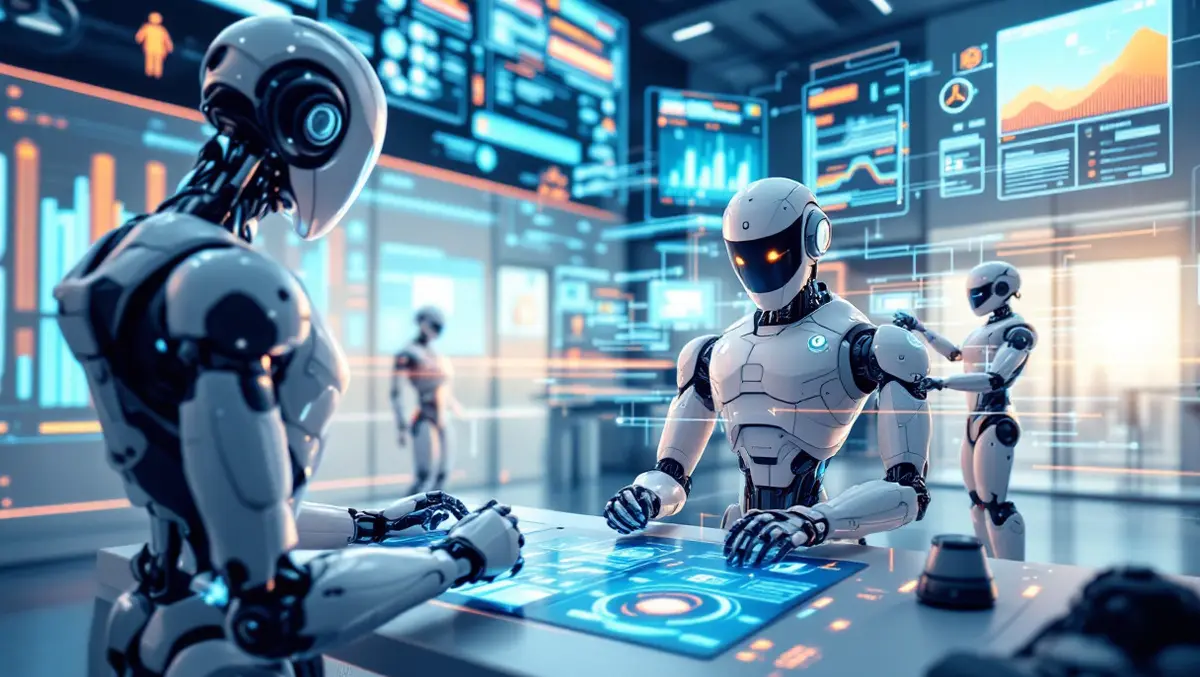
NVIDIA unveils new Isaac GR00T tools powering robot evolution
NVIDIA has introduced updated cloud-to-robot computing platforms designed to support humanoid robot development using new data generation blueprints, simulation frameworks, and powerful workstation and server hardware.
NVIDIA has announced NVIDIA Isaac GR00T N1.5, the first update to its open, customisable foundation model for humanoid reasoning and skills. In addition, the company unveiled Isaac GR00T-Dreams, a new synthetic motion data generation blueprint, and expanded its NVIDIA Blackwell systems portfolio to accelerate research, simulation, and deployment in the robotics industry.
A range of robotics companies, including Agility Robotics, Boston Dynamics, Fourier, Foxlink, Galbot, Mentee Robotics, NEURA Robotics, General Robotics, Skild AI and XPENG Robotics, have adopted NVIDIA's Isaac platform technologies to progress humanoid robot development.
Jensen Huang, Founder and Chief Executive Officer of NVIDIA, stated, "Physical AI and robotics will bring about the next industrial revolution. From AI brains for robots to simulated worlds to practice in or AI supercomputers for training foundation models, NVIDIA provides building blocks for every stage of the robotics development journey."
NVIDIA Isaac GR00T-Dreams, demonstrated by Huang, is positioned as a blueprint for generating synthetic motion data known as neural trajectories. This data supports physical AI developers in teaching robots new behaviours and in improving adaptation to various environments.
The Isaac GR00T-Dreams workflow involves the post-training of Cosmos Predict world foundation models (WFMs) for robots. Developers can use a single image as input, and GR00T-Dreams will output videos of the robot executing new tasks in novel environments. The system then extracts action tokens—small, processed data units—utilised to teach robots how to perform these tasks.
This blueprint complements NVIDIA's previously released Isaac GR00T-Mimic, which uses the NVIDIA Omniverse and Cosmos platforms to augment existing data sets. By contrast, GR00T-Dreams generates fresh synthetic data, enabling further enrichment of robot training datasets.
NVIDIA Research applied the GR00T-Dreams blueprint to quickly develop GR00T N1.5, updating its original model in 36 hours, compared to the nearly three months typically required for manual human data collection.
The updated GR00T N1.5 model is capable of more effectively adapting to new workspaces and recognising objects based on user instructions. NVIDIA reports significant improvements in the model's success rate when performing common material handling and manufacturing tasks, such as sorting and storing objects.
Early adopters of the GR00T N models include AeiRobot, Foxlink, Lightwheel and NEURA Robotics. These organisations are pursuing varied applications: AeiRobot is using the models to enable its ALICE4 robot to follow natural language instructions and perform complex pick-and-place tasks in industrial settings, while Foxlink Group is employing the models to enhance industrial robot manipulator efficiency. Lightwheel focuses on validating synthetic data for streamlined humanoid deployment in factories, and NEURA Robotics is evaluating the models to accelerate household automation system development.
NVIDIA has also released additional simulation and data generation frameworks intended to bridge the gap in data quantity and mitigate the costs and risks associated with real-world robot testing. These developments include NVIDIA Cosmos Reason, a new world foundation model that uses chain-of-thought reasoning to curate higher-quality synthetic data for training physical AI models, and Cosmos Predict 2, which offers enhancements for world generation and reduced hallucination and will be available soon.
Other new tools include Isaac GR00T-Mimic for generating vast quantities of synthetic motion trajectories using few human demonstrations, an open-source physical AI dataset incorporating 24,000 high-quality humanoid robot motion trajectories, and upcoming availability of Isaac Sim 5.0 and Isaac Lab 2.2 on open platforms such as GitHub. These simulation frameworks aim to make development pipelines more efficient and scalable.
Various companies are already utilising these simulation tools and blueprints. Foxconn and Foxlink use GR00T-Mimic for synthetic motion generation, while Agility Robotics, Boston Dynamics, Fourier, Mentee Robotics, NEURA Robotics and XPENG Robotics train their robots with Isaac Sim and Isaac Lab. Skild AI develops general robot intelligence with these frameworks, and General Robotics integrates them into its platform.
Regarding hardware, international system manufacturers have announced new RTX PRO 6000 Blackwell workstations and servers built with NVIDIA technology. These platforms are intended for robot developers to handle training, data generation, robot learning, and simulation workloads on a single architecture. Providers such as Cisco, Dell Technologies, Hewlett Packard Enterprise, Lenovo and Supermicro offer NVIDIA RTX PRO-powered servers, with Dell Technologies, HPI and Lenovo supplying RTX PRO 6000 Blackwell workstations as well.
Developers with greater computational needs can access NVIDIA Blackwell systems including the GB200 NVL72, which is made available through NVIDIA DGX Cloud and cloud partners, enabling up to 18 times higher data processing performance for large-scale projects.
NVIDIA plans to enable deployment of robot foundation models to its Jetson Thor platform, which will support accelerated on-robot inference and runtime performance.


